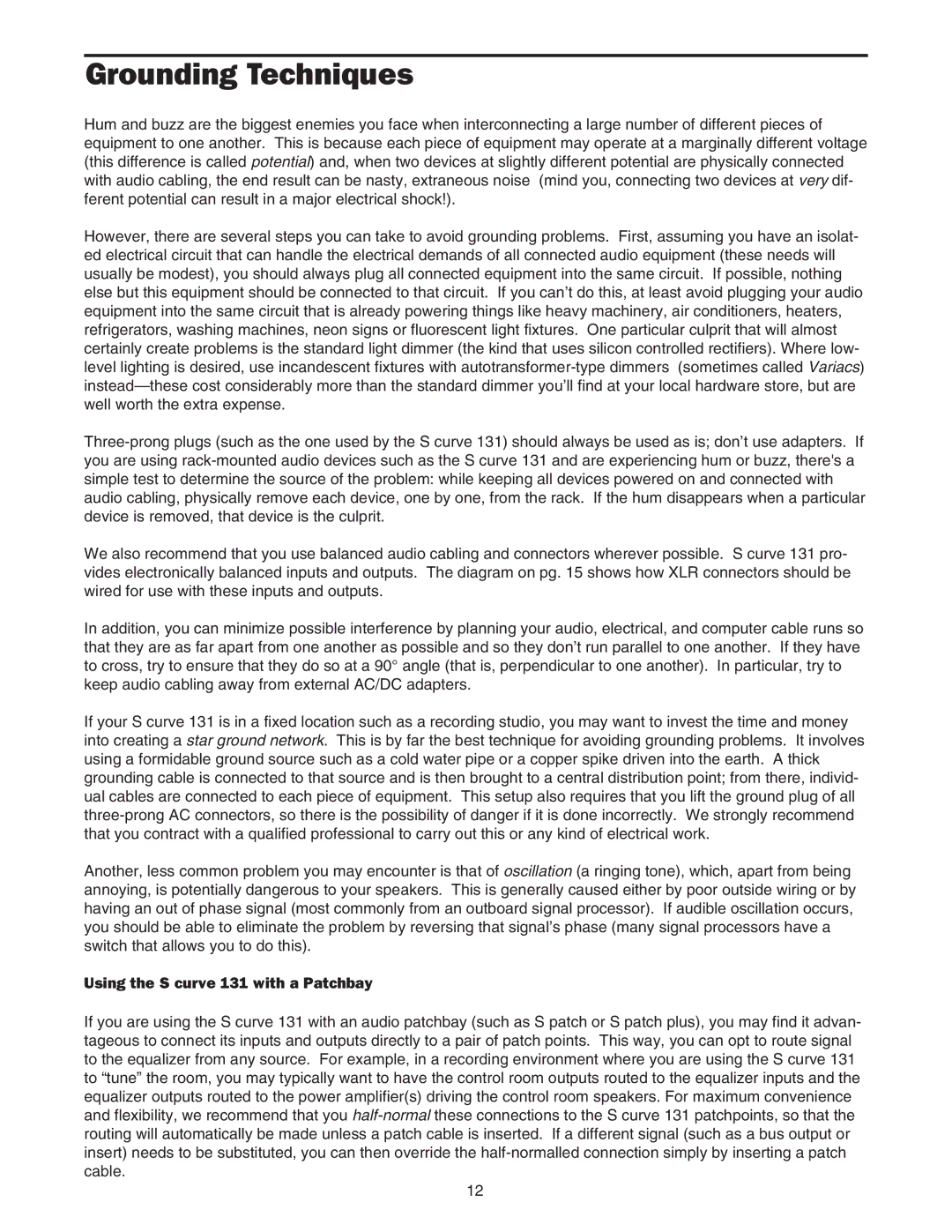Grounding Techniques
Hum and buzz are the biggest enemies you face when interconnecting a large number of different pieces of equipment to one another. This is because each piece of equipment may operate at a marginally different voltage (this difference is called potential) and, when two devices at slightly different potential are physically connected with audio cabling, the end result can be nasty, extraneous noise (mind you, connecting two devices at very dif- ferent potential can result in a major electrical shock!).
However, there are several steps you can take to avoid grounding problems. First, assuming you have an isolat- ed electrical circuit that can handle the electrical demands of all connected audio equipment (these needs will usually be modest), you should always plug all connected equipment into the same circuit. If possible, nothing else but this equipment should be connected to that circuit. If you can’t do this, at least avoid plugging your audio equipment into the same circuit that is already powering things like heavy machinery, air conditioners, heaters, refrigerators, washing machines, neon signs or fluorescent light fixtures. One particular culprit that will almost certainly create problems is the standard light dimmer (the kind that uses silicon controlled rectifiers). Where low- level lighting is desired, use incandescent fixtures with
We also recommend that you use balanced audio cabling and connectors wherever possible. S curve 131 pro- vides electronically balanced inputs and outputs. The diagram on pg. 15 shows how XLR connectors should be wired for use with these inputs and outputs.
In addition, you can minimize possible interference by planning your audio, electrical, and computer cable runs so that they are as far apart from one another as possible and so they don’t run parallel to one another. If they have to cross, try to ensure that they do so at a 90° angle (that is, perpendicular to one another). In particular, try to keep audio cabling away from external AC/DC adapters.
If your S curve 131 is in a fixed location such as a recording studio, you may want to invest the time and money into creating a star ground network. This is by far the best technique for avoiding grounding problems. It involves using a formidable ground source such as a cold water pipe or a copper spike driven into the earth. A thick grounding cable is connected to that source and is then brought to a central distribution point; from there, individ- ual cables are connected to each piece of equipment. This setup also requires that you lift the ground plug of all
Another, less common problem you may encounter is that of oscillation (a ringing tone), which, apart from being annoying, is potentially dangerous to your speakers. This is generally caused either by poor outside wiring or by having an out of phase signal (most commonly from an outboard signal processor). If audible oscillation occurs, you should be able to eliminate the problem by reversing that signal’s phase (many signal processors have a switch that allows you to do this).
Using the S curve 131 with a Patchbay
If you are using the S curve 131 with an audio patchbay (such as S patch or S patch plus), you may find it advan- tageous to connect its inputs and outputs directly to a pair of patch points. This way, you can opt to route signal to the equalizer from any source. For example, in a recording environment where you are using the S curve 131 to “tune” the room, you may typically want to have the control room outputs routed to the equalizer inputs and the equalizer outputs routed to the power amplifier(s) driving the control room speakers. For maximum convenience and flexibility, we recommend that you
12
